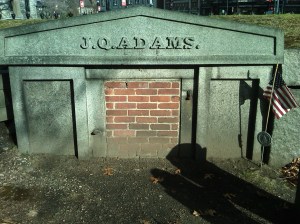How High
In this installment of Ivy On Celluloid, the series where I look at college-set movies and check them for plausibility and accuracy, I’m going to take a look at the 2001 higher education stoner comedy, How High.
The plot of How High is summarized on IMDb as follows:
Two guys by the name of Silas and Jamal decided to one day smoke something magical, which eventually helps them to ace their college entrance exam.
The film’s director was Jesse Dylan, who has also helmed the films Kicking and Screaming and American Wedding, as well as a number of music videos and concert films.
The screenwriter for How High was Dustin Lee Abraham, who later contributed significantly to the hit television show CSI: Crime Scene Investigation.
The cast of How High includes Method Man (Keanu, The Wackness, Garden State), Redman (Seed of Chucky, Dark), Obba Babatunde (Dear White People, The Temptations), Mike Epps (The Hangover, Nina), Fred Willard (Best In Show, Anchorman), Jeffrey Jones (The Devil’s Advocate, Beetlejuice, Ferris Bueller’s Day Off), Hector Elizondo (Pretty Woman, Necessary Roughness), and Anna Maria Horsford (Minority Report, Friday).
The cinematographer for How High, Francis Kenny, has had a long career shooting comedy features like Coneheads, Scary Movie, She’s All That, Heathers, and Wayne’s World 2.
The editor for the film was Larry Bock, whose other credits include Critters, Fright Night, Bring It On, The Mighty Ducks, Final Justice, Joysticks, Alligator, and Bill & Ted’s Excellent Adventure, among others.
For the external shots of the campus, the University of California, Los Angeles stands in for Harvard University, the setting for the story: a common practice for films about Harvard and fictionalized Harvard stand-ins.
A How High sequel has been in various stages of development for going on 10 years now, and rumor has it that it will begin filming in 2018, though that remains to be seen.
The character of Dean Carl Cain is mostly referred to simply as Dean Cain, which is also the name of a well-known actor, who famously played Superman in Lois & Clark: The New Adventures of Superman.
How High was made on a production budget of $20 million, on which it took in roughly $31.1 million in its lifetime theatrical run. Critically, it received mixed scores, with audiences appreciating it far more than professional critics. It currently holds an IMDb user rating of 6.3/10, along with Rotten Tomatoes scores of 27% from critics and 79% from audiences.
To be honest, stoner comedies aren’t really my thing, so I don’t have much of a barometer to judge this by. To me, most of the jokes seemed to land flat, or were just shallow and crass to start with, if not pushing the bounds of racism (in particular, the portrayals of foreign students were less than flattering), but that seems like it might be par-for-the-course in the genre. However, there are a handful of comedy highlights here to be sure, such as Hector Elizondo’s exasperated crew coach and the buttoned-up, straight man antics of “Dean Cain”.
That said, what How High might lack in comedy, it makes up for by bringing up a litany of topics and issues within higher education: there’s no shortage of interesting discussions to be had from this movie.
The very foundation of How High is built on the idea that smoking marijuana, grown in the right conditions, can help a person score higher on tests. While I haven’t seen anything about specifically marijuana giving students an academic edge, there is a fair amount of information and research on academic performance enhancing drugs, particularly stimulants and nootropics.
Although current nootropics offer only modest improvements in cognitive performance, it appears likely that more effective compounds will be developed in the future and that their off-label use will increase. One sphere in which the use of these drugs may be commonplace is by healthy students within academia.
As the story in How High progresses, the character Silas begins excelling in his Botany class, due to his extensive experience cultivating marijuana plants at home. In 2017, Northern Michigan University began offering a degree program in Medicinal Plant Chemistry, which is “the first program to offer a 4-year undergraduate degree focusing on marijuana,” which gives apparent credence to the academic legitimacy of Silas’s extracurricular practices.
Of further interest, there is a closely guarded laboratory at the University of Mississippi that has a massive stock of cannabis that “is grown, processed and sold by the federal government. The stockpile represents the only source of pot allowed for researchers who want to conduct Food and Drug Administration-approved tests on using marijuana for medical purposes.”

Early in the film, there is a sequence in which Jamal’s family pressures him into focusing on his college entrance exams. In this scene, it is revealed that Jamal is a would-be first generation student, and that both of his siblings completed non-degree certificate programs. In the same sequence, Jamal’s mother casually mentions that he is not just expected to go to college, but to not go to a community college.
Stigma towards community college degrees is a topic I personally find really fascinating: there is a lot of history and politics tied up in why society doesn’t value community college degrees, and a lot of it is tied up in classism, and a desire for upward social mobility that community colleges are not seen as offering. In an article titled “The Stigma About Going To Community College That No One Talks About” for The Huffington Post, Bizzy Emerson writes:
there is…stigma surrounding community college. Many believe it isn’t “real college,” or that it’s much easier than a typical four-year university. This is just simply false. While it offers a different lifestyle, the course load and academics can be just as rigorous as any other school. Community college is an excellent option for any student in any situation, and many will use it as a financial or academic primer before transferring to a four-year university after completing their sophomore year.
Following their perfect entrance exam scores, Jamal and Silas are courted by representatives from a number of different schools, which allows the film to poke at a couple of different types of higher education institutions. Among them is a school called the Reparations Technical Institute, which is represented by black nationalists with a heavy, intense pitch for the duo. RTI, if I were to wager a guess, is a stand-in for Historically Black Colleges and Universities (HBCUs), which includes schools like Howard University and Morehouse College, which are known as hubs for activism and racial studies. I assume this portrayal is meant to be a knock at those schools for taking themselves too seriously, but I think it undercuts HBCUs as well by equating them with community and technical colleges.
During the same sequence, a priest is shown trying to recruit the duo to a religious university (presumably Catholic), which is immediately and repeatedly shot down once the issue of sexual morality and celibacy is brought up. While this is played for a joke, the strict sexual constraints of many religious higher education institutions in the United States has created a multitude of issues for students over the years. Whether it is the suppression and oppression of LGBT students or a failure to deal with reports of sexual assault on campus, the problems with the stringent sexual codes of many universities go beyond just being prude, and are a hot topic of discussion in progressive and higher education circles.
All of that said, I was able to dig up an interesting tidbit of information that Jamal and Silas might have appreciated: according to a paper titled “Hooking Up At College – Does Religion Make A Difference?”, researchers from Mississippi State University, the University of Miami, and the University of Texas – Austin concluded that:
Women who attend colleges and universities with a Catholic affiliation are more likely to have hooked up while at school than women who attend academic institutions with no religious affiliation, net of individual-level religious involvement.
There is an interesting sequence in How High which shows Silas and Jamal in an African American History class, taught by an aging white man. According to a 2009 feature in the Los Angeles Times, “blacks make up the majority of the faculty” in African American studies programs, but “white scholars increasingly are making their mark.” Among the handful of white African American studies professors working today are Martha Biondi at Northwestern University, Shawn Alexander at the University of Kansas, and Mark Naison at Fordham University.
In one of the more shocking and horrific sequences of the film, Silas and Jamal rob the grave of President John Quincy Adams, and mutilate his corpse in an attempt to smoke his remains to pass a test. The actual grave of John Quincy Adams is only a short drive from Harvard University, in Quincy, MA. So, as far as proximity is concerned, this is plausible. However, John Quincy Adams and his wife are both buried alongside John and Abigail Adams in a subterranean crypt underneath the United First Parish Church, which is a national historic landmark. So, the practical likelihood that a handful of desperate stoners could penetrate the church and successfully extract the Presidential corpse is pretty low.
One of the big reveals of the film is the discovery of a giant bong designed and used by Benjamin Franklin. There isn’t any evidence to indicate that Benjamin Franklin actually had or used a giant bong, or even that he was a marijuana enthusiast, but there are unconfirmed rumors that he utilized hemp as part of a paper mill. What is more interesting to me is that this artifact would wind up in the hands of Harvard University. Benjamin Franklin was granted honorary degrees from both Harvard and Yale, but the man is nearly synonymous with another Ivy League institution, which he notably founded: the University of Pennsylvania. If such an artifact were to appear, regardless of what it was, I’d wager it would wind up in Philadelphia one way or another.
I would be remiss to not mention the history of racism and Harvard, and how that comes through in How High. The upper administration of Harvard University in the film are shown to be clueless as to the value of having a diverse student body, and ultimately only recruit and admit Jamal and Silas simply because they are desperate to meet a diversity quota. Harvard University has a long history of deliberate exclusion, particularly of women, Jewish people, and people of color, which is outlined efficiently in The Chosen: The Hidden History of Admission and Exclusion at Harvard, Yale, and Princeton by Jerome Karabel, which is a book I highly recommend. Essentially, these schools came up with an admissions system that allowed them to accept or reject whichever students they wanted based on “character,” an ill-defined concept that was (at the time) intended to give white Protestants an edge in admissions decisions over those who were regarded as the “wrong” type of student (Jewish, women, black, etc.).
On top of that, Harvard University once had slaves that worked the campus: something that the current administration is trying to atone for. On the school’s website, there is a clear statement that “Harvard was directly complicit in America’s system of racial bondage from the College’s earliest days in the 17th century until slavery in Massachusetts ended in 1783.” Given Harvard’s history of racism, it might not be so much of a surprise that Jamal and Silas have trouble culturally fitting in at the institution: if the institution were adequately diverse, they wouldn’t be fish out of water in the first place, and the very premise of the movie wouldn’t be comically sound.
At one point in How High, characters are shown stealing a historic campus statue in the middle of the night. Apparently, there is a long and rich tradition of campus statue thefts: on a cursory search, I was able to dig up articles about cases at Pepperdine University in 2010, Salisbury University in 2010, Mercer University in 2011, University of North Carolina – Wilmington in 2014, and East Carolina University in 2016.
Another sequence of note is one in which a prank on the stuck-up administrator Dean Cain goes awry, which ends with a bunch of birds violently exploding in his office. I wasn’t able to find any record of pranks coming even close to this level of violence and madness: for the most part, the college pranks I’ve read about have been limited to goofy mischief, like putting pumpkins on top of buildings or any of the nutty misdeeds of MIT’s “hackers.”
As far as other highlights of the film worth discussing go, there is a bizarre sequence in which Jamal and Silas are shown selling pornography in public on campus, which brought to mind the “Smut for Smut” campaign at the University of Texas at San Antonio, in which an atheist campus group handed out pornography in exchange for bibles. Both events, real and fictitious, are equal parts tasteless, needlessly provocative, and inexplicable.

There is whole lot more I could talk about in regards to higher education and How High, but I want to save a few topics for future movies in this series. I already touched on nepotism in a previous review, and I will be covering issues like hazing, financial aid, and the party pathway through future films, but be assured that there is plenty more to be found in this movie.
Overall, I thought that How High was a pretty forgettable comedy that should probably stay locked away in the decade that made it. However, there were a surprising number of interesting topics and issues related to higher education that came up over the course of the film, which gave it some entertainment value for me. As far as a recommendation goes, I think enjoyment of this film relies on two things: First, nostalgia. If you have fond memories of this movie, then you might enjoy seeing it again. Second, I think you have to be stoned out of your mind to find some parts of this movie funny.
![Misan[trope]y](https://misantropey.com/wp-content/uploads/2014/10/misantropeyhead1.png)




One thought on “Ivy On Celluloid: How High”